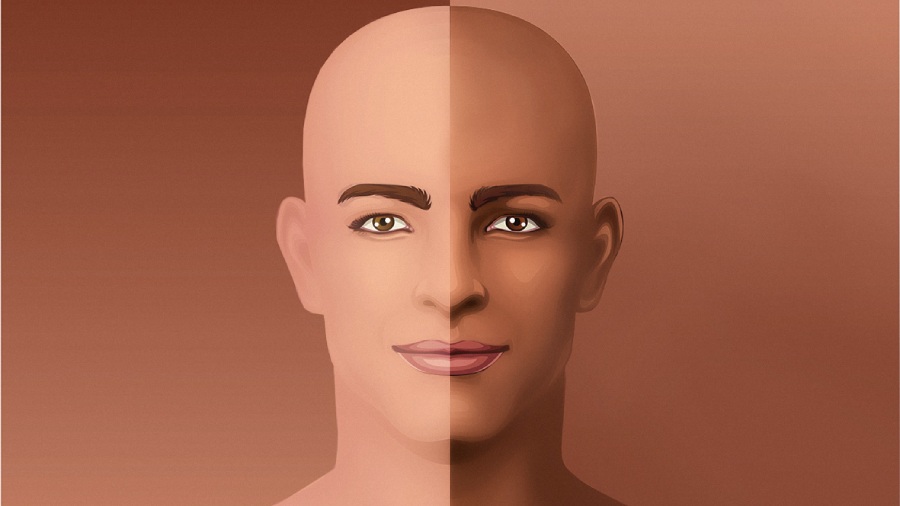Book: The Last White Man
Author: Mohsin Hamid
Publisher: Hamish Hamilton
Price: ₹599
It was perhaps his second novel, The Reluctant Fundamentalist (2007), that propelled the British-Pakistani novelist, Mohsin Hamid, into the purview of international readership. The Last White Man, his fifth and latest novel, was published this year.
The narrative begins with its protagonist, Anders, a white man, waking up one morning “to find he had turned a deep and undeniable brown”. This opening statement, made so matter-of-factly by the author, would make any reader double back and read it once more. The story continues to show us that Anders has indeed turned “dark”, and this phenomenon soon starts affecting almost all the inhabitants of Anders’ world which reads compulsively like modern America. Anders, an amicable man who works as a fitness instructor at an “iron gym”, is shown to be liked by most. Hamid describes him as “popular at the gym”, someone whom the clients valued and called “doc” as he had accrued some expertise in “putting bodies back together”. It is, therefore, twice as difficult for this man to find his identity stolen by “this other’s body” and he feels, initially, a terrific anger at the unfairness of his situation. His girlfriend, Oona, at first wary of this new Anders, gradually seems to warm up to him far more than she had to his lighter being and starts to covet the darkness of his skin, even willing it on herself, trying to replicate it with makeup and artifice until, one day, to her relief, it finally takes over. It is harder for Anders’ white father to accept this although he is the first to leap to his son’s aid when the militants make their first threat. Anders’ father is ironically the “last white man” to remain in their town as he dies with the colour of his skin unaltered. Oona’s mother, a veritable racist, finds pleasure in the riots that grip the town following the gradual transformation of many inhabitants, riots that are inflicted by the diminishing white population as an attempt to preserve its false sense of authority.
While it is hard to situate the novel in a particular genre — magic realism, surrealism or other varied possibilities — the plot is, simply enough, about the flow of life and the lives of the characters. Hamid deliberately refrains from analysing the reasons for these transformations that grip the society he paints and, instead, focuses on the intimate details of Anders and Oona’s lives, the losses they have had, the deaths they have seen, and the closeness they share. At the heart lie unspoken comments on the bitter failure of movements like Black Lives Matter and some very specific nods to urban digitisation and the relevance of lockdowns. The characters observe the world through television and Twitter, social media becoming the principal mode of communication in a riot-ridden life of forced exile.
The Last White Man, like Hamid’s other novels, tests the limits and notions of fiction. The long sentences rife with run-on clauses that hurriedly tumble onto each other compel us to read on given their unsettling and irregular rhythm. They invoke the sense of a stream of consciousness and, sometimes, the consciousness is collective, a collective that invites us to join in. The peculiarity of the situation described in The Last White Man would make us wary. The riots suggest a violent climax and a sense of unease is made to build in many scenes, including the ones where Anders drives to Oona’s place, the one where they walk along the river, and when Oona drives to Anders’ father’s house late at night. But nothing happens to Anders or Oona, the boys don’t throw sharp pebbles at them, and the tension is broken by a heavy truck shuddering over a pothole as it passes them by.
All of Hamid’s novels tend to provide sharp insights into politics and racism in the world. The Last White Man imparts a sense of settling into one’s environment as it drags on monotonously. The initially empty streets start filling up, bars and restaurants start functioning and, gradually, people start getting easy in their skins. All along Anders’ kind white soul trapped in a brown body tries to find reasons to interact with the cleaning guy, the only other brown guy apart from Anders at his gym. The cleaning guy isoriginally brown and Anders almost patronisingly offers to helphim to train, as if inviting him upto Anders’ level of an originally white man turned brown. Even this he does when everyone else has left the gym because the intention of dissolving racial divisions with which the story is created remains — bitterly — just an intention. The cleaning guy refuses Anders’ offer “not with a smile, or not with a smile on his lips, although perhaps with one in his eyes”, saying “what I would like isa raise”.










